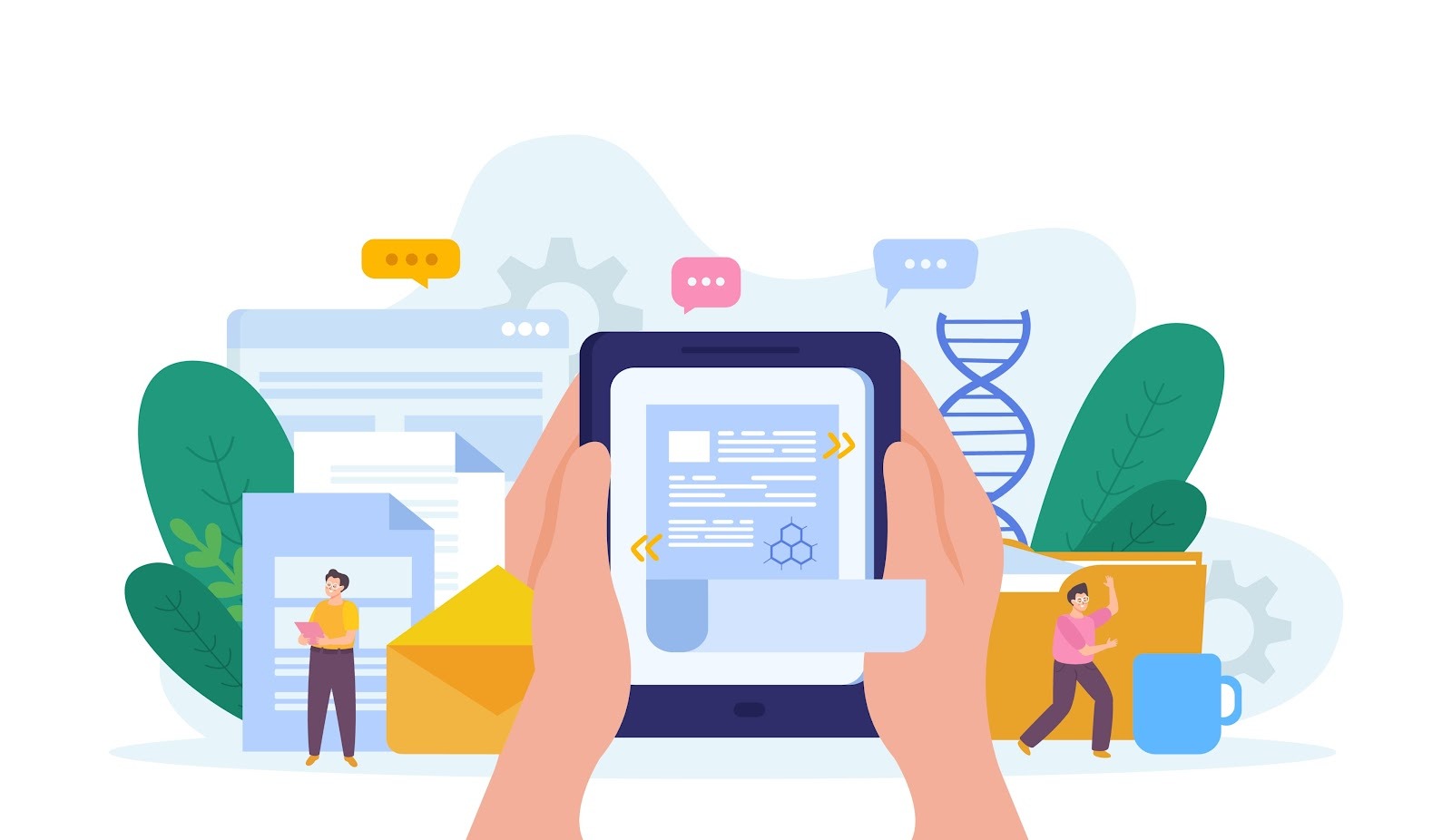Have you ever wondered why loan processing still feels slow, even with all the tech available today?
Most of the delay comes from handling documents manually. Teams read forms, type details, and check each form submitted for errors and potential fraud.
AI-powered OCR technology can do all of this manual labor for your team automatically. Let's discuss what it is, how it works, and what it truly offers your team.
What Is AI-Powered OCR Technology?
AI-powered OCR (optical character recognition) technology is used to read and understand text from scanned documents, images, and handwritten forms automatically.
This type of AI-powered document processing can recognize various document formats, adjust to different handwriting styles, and improve its accuracy over time.
When used with robotic process automation, AI-powered OCR can handle repetitive office work like sorting forms, entering information, or performing image tagging automatically.
For example, when an insurance company processes forms, the system can automatically find and read policy numbers, claim details, or customer information without someone having to type it in.
Intelligent document processing uses AI to organize and clean up the extracted data so it can be used right away for reports, approvals, or compliance checks.
Traditional OCR vs AI-Powered OCR: How Do They Differ?
Both traditional OCR and AI-powered OCR help with document digitization by turning printed or handwritten text into digital data. But the way they handle data extraction is very different.
Traditional OCR software focuses mainly on text recognition, converting characters from scanned documents or PDFs into readable text. It works best with clean, structured documents that follow the same format every time.
AI-powered OCR, or AI-enhanced OCR, takes this further. It combines AI models, machine learning, intelligent document processing, and natural language processing to understand the meaning and context of the text.
Some tools may also include fraud detection to protect you from false submissions that can cost you a lot.
This allows it to read complex insurance documents, spot key details scattered across pages, and handle different layouts without manual setup.
AI-powered OCR is better than traditional OCR at automating data extraction, reducing errors, and improving contextual understanding, which saves time and helps insurance teams process information faster.
How Does AI OCR Software Work?
Understanding how AI OCR software processes documents helps explain why it has become such an important tool for the insurance industry. Let's discuss it below:
Image Capture And Preprocessing
The process begins with data capture. The system takes images of documents such as scanned forms, photos, or PDFs and prepares them for analysis.
It cleans up each file by removing noise, straightening lines, and improving clarity. This step helps the software detect and read text more accurately, even in poor-quality scans.
Text Recognition
Once the images are ready, the software uses its OCR capabilities to identify and convert printed or handwritten text into machine-readable characters.
It can recognize different fonts and multiple languages, allowing teams to handle documents from various sources without extra setup.
AI-Based Classification And Context Awareness
After recognizing the text, AI algorithms analyze the content. They classify documents by type, such as claims, policies, or ID proofs, and use context awareness to understand what each section means.
For example, the system can tell the difference between a customer’s name and a policy number based on layout and wording.
Data Extraction
At this stage, the software focuses on automating data extraction. It identifies key details like policy numbers, coverage limits, claim dates, and customer information.
Over time, it becomes more accurate by learning from user feedback and recognizing data patterns across different document types.
Error Correction And Validation
To maintain reliability, OCR tools can check their own work based on preset criteria. It validates extracted data by comparing it against internal systems, business rules, or known formats.
Any inconsistencies are automatically flagged or corrected, cutting down on manual review and improving trust in the results.
Structured Data Output And Seamless Integration
Finally, all verified information is converted into organized digital formats ready for use in underwriting, claims management, and compliance.
Thanks to seamless integration, the data moves directly into existing platforms, allowing teams to make decisions faster and work more efficiently without switching systems.
What Document Types Can AI-Powered OCR Scan?
Let's look at the main types of documents that AI-powered OCR can scan and process.
Structured Documents
Structured documents have a fixed document structure and layout, which means every piece of information appears in the same place.
These are the easiest for OCR to process since the system knows exactly where to look for each data field. AI-powered OCR quickly identifies numbers, names, and details without needing manual setup.
It’s perfect for handling large volumes of insurance paperwork where accuracy and speed are key.
Examples include:
- Claim forms
- Policy applications
- ACORD forms
- ISO applications
- Bank statements
- Financial statements
- Tax returns
- Statement of Value
Semi-Structured Documents
Semi-structured documents combine fixed sections with narrative text. Some parts follow a pattern, while others vary depending on the case. AI OCR uses machine learning and natural language processing to handle both types of content.
It reads and understands labels, tables, and free text while maintaining context, which makes it perfect for complex insurance files.
Sample documents can include:
- Insurance policies
- Premium audits
- Supplemental application docs
- Fleet schedules
- UCC filings
These documents often include both printed text and descriptive notes, so OCR needs to interpret meaning, not just words.
The software’s context awareness allows it to connect related data fields accurately, even when they appear in different parts of the document.
Unstructured Documents
Unstructured documents don’t follow a fixed layout or format, which makes them a challenge for standard OCR systems. AI-powered OCR solves this by understanding unstructured data through context and language.
It uses natural language processing to detect and classify information hidden within paragraphs, making it much easier to work with materials like correspondence or reports.
Some examples of unstructured documents include:
- Customer correspondence
- Legal documents
- Medical reports
- Accident descriptions
- Emails
This level of intelligence allows insurers to automatically organize and interpret free-text files, improving accuracy and cutting down on manual work when reviewing unformatted documents.
Handwritten Documents
Handwriting adds another layer of complexity, especially in insurance, where many forms and notes are still written by hand.
AI OCR combines intelligent character recognition (ICR) with AI algorithms trained to read diverse handwriting styles. It can interpret printed or handwritten text with impressive accuracy, even when the writing is uneven or smudged.
Some examples include:
- Handwritten claim forms
- Physician notes and other medical records
- Accident reports
- Signatures on agreements
By accurately converting handwriting into digital text, insurers can process older or manually completed sensitive documents without having to retype data.
How Can You Use AI OCR Software In Your Lending Workflows?
If you’re in lending, you might be unsure about how AI OCR solutions fit into your daily document workflows. It’s normal to wonder if they’re worth the switch from manual review.
Let’s discuss the benefits below:
Faster Document Processing and Classification
AI OCR can scan and organize large batches of loan documents in seconds. It reads both printed and handwritten text, including forms like applications, income statements, and ID proofs.
The system uses advanced OCR engines to automatically sort, label, and prioritize each file, cutting down the time your team spends on manual sorting and document retrieval.
Understand Handwritten Text
Not all loan documents are clean digital files. Many still include notes, signatures, or handwritten updates. AI OCR uses handwritten text extraction to read and interpret this content accurately.
It can understand different writing styles and formats, whether from scanned forms or handwritten addenda.
This ability ensures that every piece of information, whether typed or written, is captured and verified during processing, improving both accuracy and compliance.
Fraud Detection And Compliance
Fraud prevention and compliance are critical in lending. AI OCR checks for irregularities across documents, such as mismatched names, altered numbers, or missing fields.
By verifying data through bank verification and other databases, the software flags potential risks early.
It also helps maintain data security by controlling access and monitoring how sensitive information is used within the system.
Improved Customer Experience
Faster data processing means happier borrowers. AI OCR speeds up document review and decision-making, which cuts turnaround times from days to hours.
Tasks like invoice processing and financial verification happen automatically, giving applicants quicker updates and shorter wait times.
Reducing Manual Data Entry
Using AI OCR greatly reduces manual data entry by automatically capturing and entering data into your underwriting or loan management systems.
This means your team doesn’t have to retype information from every application and can save hours of repetitive work.
It also minimizes typing errors, which helps keep your business processes consistent and reliable.
Get Smarter Lending and Insurance Workflows with Heron

Heron is a complete automation platform that helps MCA brokers and funders simplify document-heavy work. It uses AI OCR tech to read, scrub, and organize data from complex documents with precision.
Whether you are processing insurance forms or lending files, Heron handles the full process from intake to validation and delivery.
Your team can focus on funding deals while Heron manages the paperwork. Heron’s OCR technology can scan and interpret PDF files, images, and other historical documents.
It scrubs key details from more than 50 types of documents, such as bank statements, financial statements, tax returns, ACORD forms, ISO applications, premium audits, and UCC filings. Even unstructured or messy files are converted into clean, structured data ready for use.
What makes Heron different is its seamless integration. It connects directly with your existing workflows, such as Salesforce, Zoho, Guidewire, Duck Creek, and Quickbase.
There is no need to switch platforms or rebuild your systems. The data flows smoothly where it is needed, reducing effort and delays.
FAQs About AI-Powered OCR
What is AI-powered OCR?
AI-powered OCR is a smart technology that reads and converts printed or handwritten text from images or documents into digital text.
It uses deep learning to recognize characters and patterns, making it accurate even for complex files like patient records or invoices.
Can ChatGPT do OCR?
Newer ChatGPT can be used for reading and extracting text from images.
However, for funders and MCA brokers, Heron is a more practical option because it performs OCR automatically, extracts data from complex financial and insurance documents, validates it, and sends it straight into existing systems without extra tools or manual work.
Is Google OCR free?
Google OCR, available through Google Cloud Vision, offers a free tier with limited usage. After that, it becomes a paid service. It works well with other Google Cloud products and supports multiple languages and document types, making it suitable for many use cases.
For a tool that is purpose-built for lending and insurance workflows, Heron is a better choice. It can automate data scrubbing, validation, and connect to your finance CRMs.
How good is AI at OCR?
AI is highly accurate at OCR today because of deep learning models that learn from millions of samples. It can handle complex layouts, fonts, and handwritten notes with impressive precision. Many industries now rely on it for extracting text from receipts, forms, and scanned documents.


